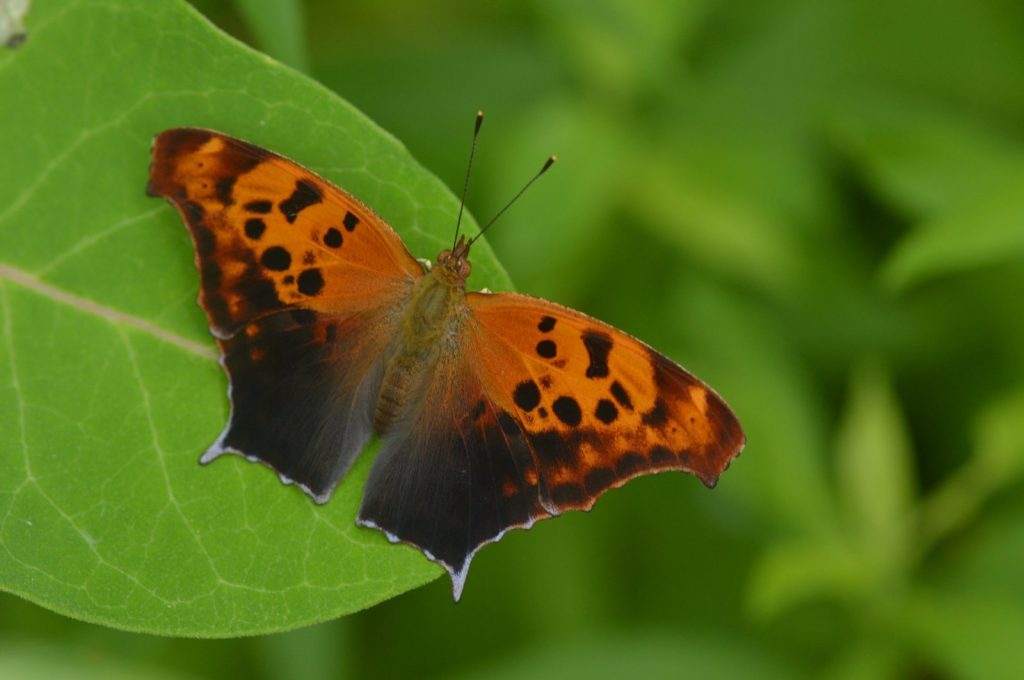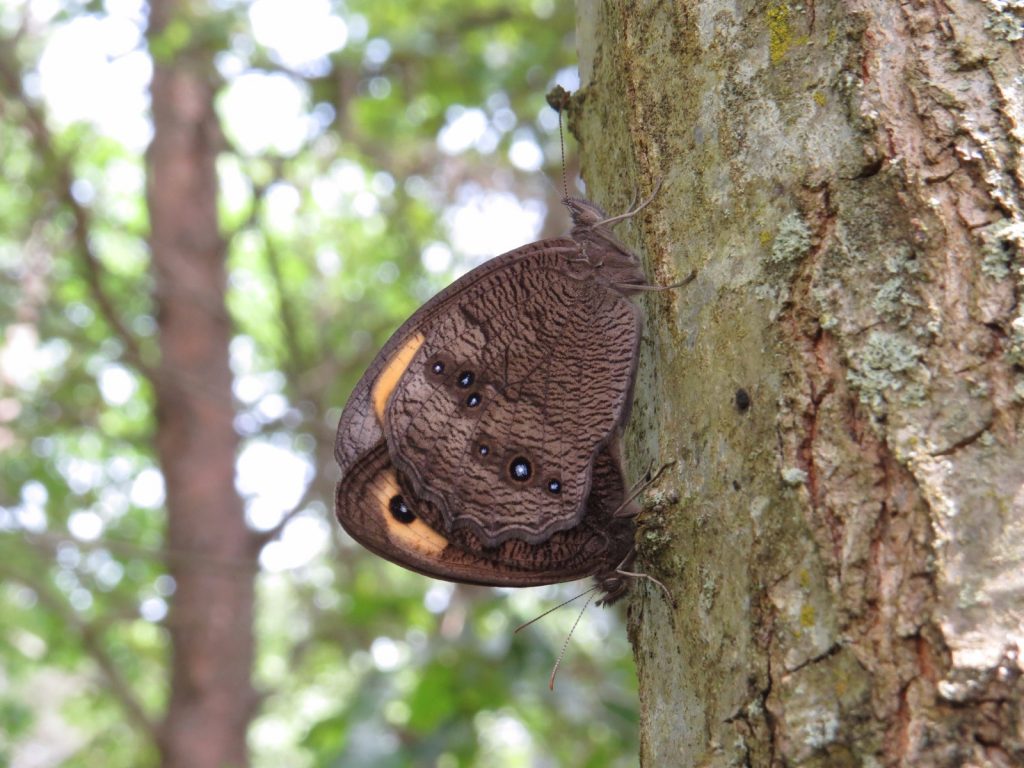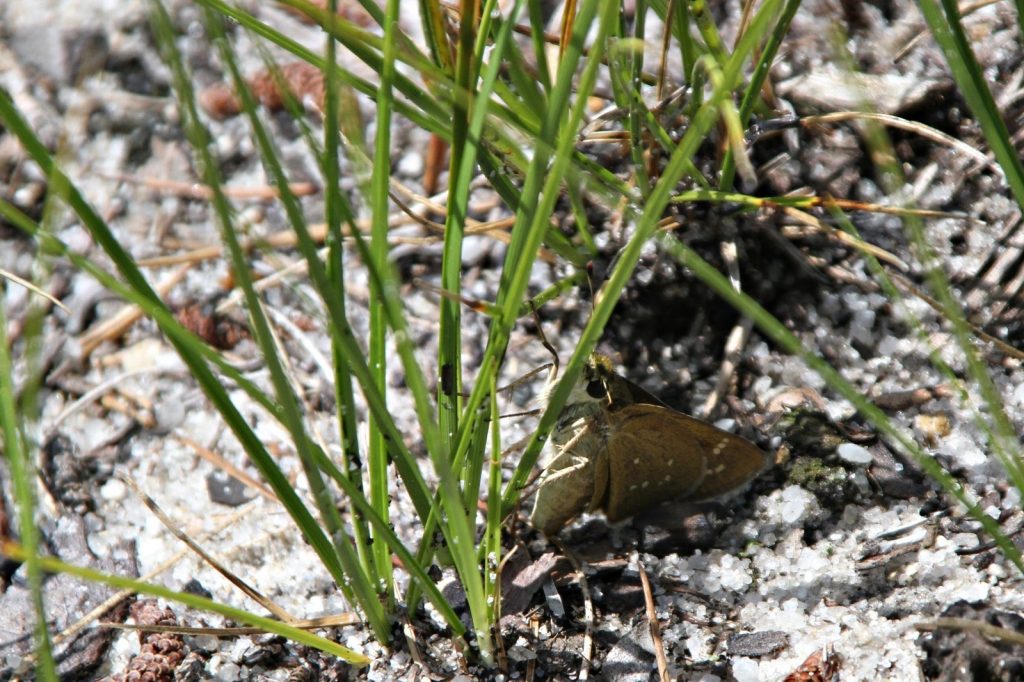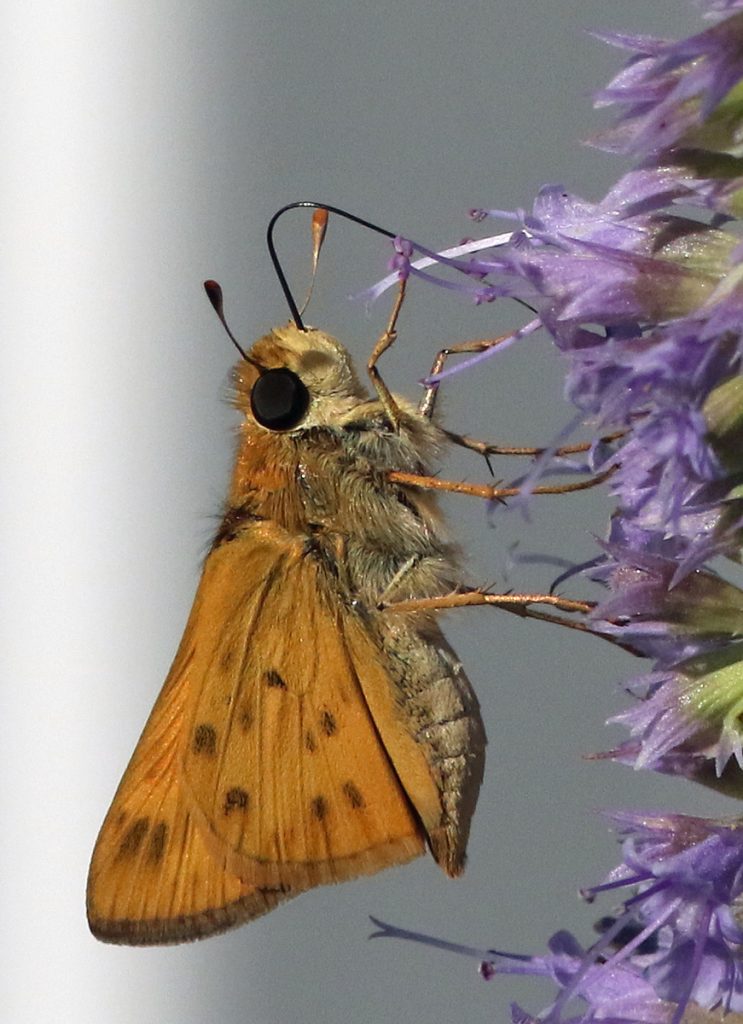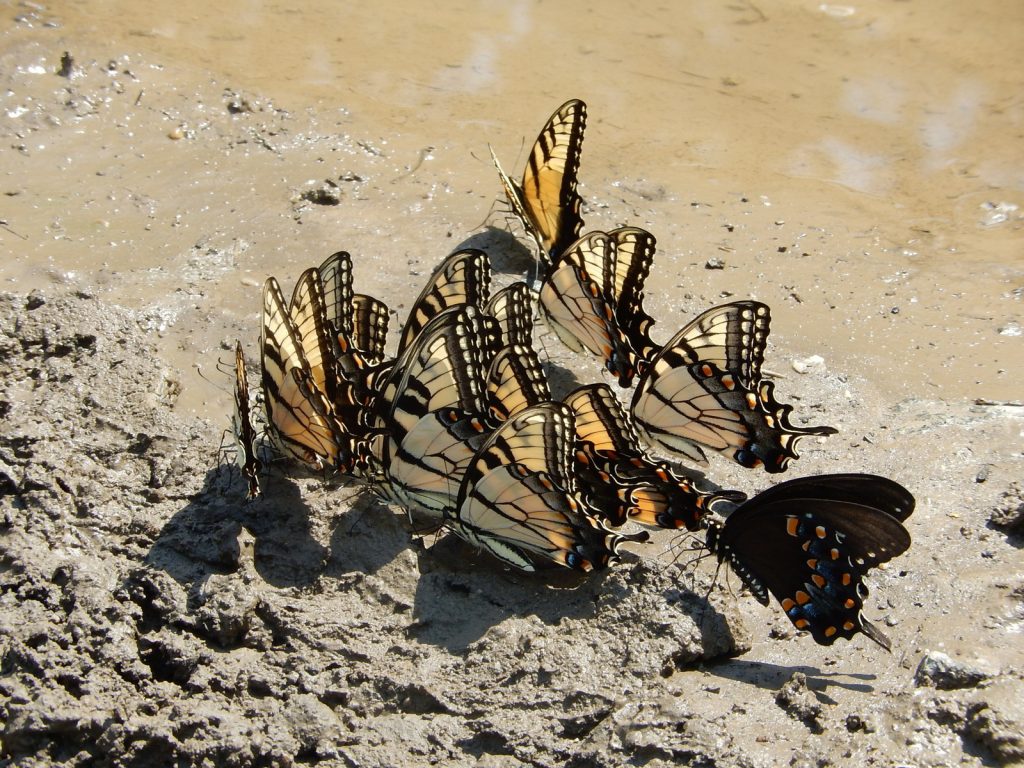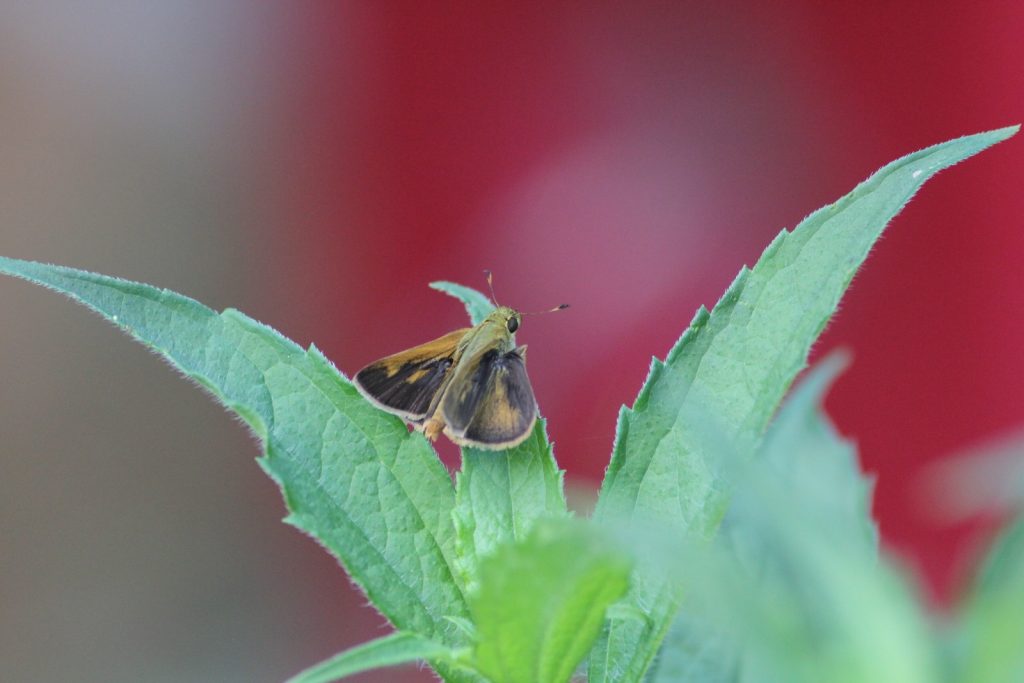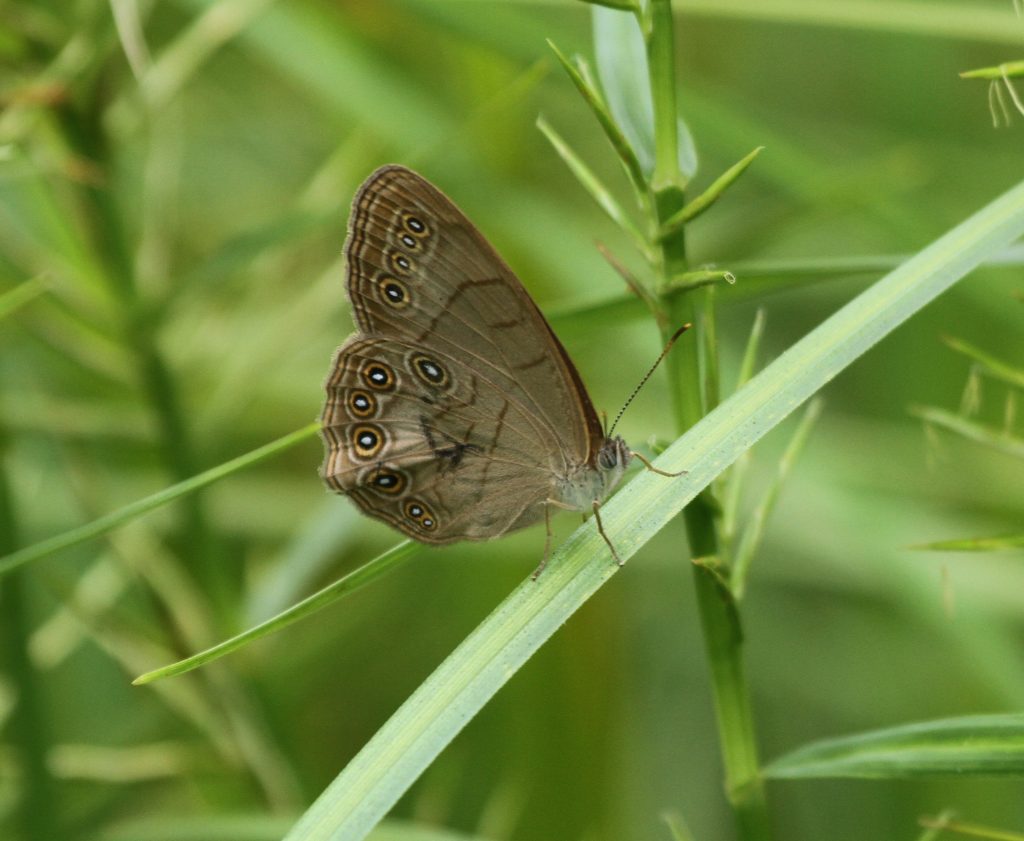Let me start with a shout-out to Jack Miller who compiled observers and species for the month and also helped select the photos for this month’s gallery. Thank you, JM!
Twenty-eight observers contributed to the log in July 2016:
Cynthia Allen
Dolores Amesbury
Jesse Amesbury
Dave Amadio
Tom Bailey
Jennifer Bulava
Claire Campbell
Nancy Chambers
Jesse Connor
Jack Connor
Steve Glynn
Jean Gutsmuth
Mike Hannisian
Chris Herz
Brian Johnson
Sandra Keller
Will Kerling
Teresa Knipper
Chip Krilowicz
Jack Miller
Beth Polvino
Barb Sendelbach
Clay Sutton
Pat Sutton
Harvey Tomlinson
Chris Tonkinson
Donna Van Horn
Matt Webster
Thanks to each of you!
Depending on how you count the new name in brackets below, we collected reports of 67 or 68 species in July. (FOYs are italicized with dates of first report.)
pipevine swallowtail
eastern tiger swallowtail
black swallowtail
spicebush swallowtail
checkered white
cabbage white
orange sulphur
clouded sulphur
cloudless sulphur 7/22/17
harvester
American copper
bronze copper
coral hairstreak
banded hairstreak
striped hairstreak
juniper hairstreak
white-m hairstreak
gray hairstreak
red-banded hairstreak
eastern tailed-blue
summer azure
American snout
variegated fritillary
great spangled fritillary
meadow fritillary
pearl crescent
question mark
eastern comma
mourning cloak
American lady
red admiral
common buckeye
red-spotted purple
viceroy
tawny emperor 7/8/16
hackberry emperor
Appalachian brown
little wood-satyr
common wood-nymph
monarch
silver-spotted skipper
northern cloudywing
southern cloudywing
Hayhurst’s scallopwing
Horace’s duskywing
wild indigo duskywing
common checkered-skipper
common sootywing
least skipper
fiery skipper 7/11/16
dotted skipper
Peck’s skipper
swarthy skipper
tawny-edged skipper
[southern broken-dash, 7/26/16]
northern broken dash
crossline skipper
sachem
little glassywing
Delaware skipper
mulberry wing
rare skipper 7/1/16
zabulon skipper
Aaron’s skipper
broad-winged skipper
dion skipper 7/14/16
dun skipper
salt marsh skipper
Seven single-brooded species apparently ended their flights for 2016 in June (not reported in July):
bog copper
Edwards’ hairstreak
frosted elfin
Georgia satyr
European skipper
two-dotted skipper
dusted skipper
Obvious Second Broods:
Identifying the emergence of a new brood is often difficult, because the gap between broods can be brief or even non-existent. However, at least three species made no-question-about-it second brood flights in July, long after their first broods had ended:
juniper hairstreak (re-emerged 7/17; previously last reported 4/22)
white-m hairstreak (re-emerged 7/15; previously last reported 4/17)
wild indigo duskywing (re-emerged 7/4; previously last reported 5/27)
Ups & Downs:
As we have seen each year of our log, butterfly populations do not move in tight synchrony: a good year for some species can be a bad year for others.
2016 has been a good year for several species, including American snout, dion skipper, northern broken-dash, and others.
At the opposite end of the spectrum some species seem to be struggling. Perhaps the most obvious absence is painted lady. It’s a notoriously cyclic species and this year is clearly a down year for it, at least so far. We have recorded just two individuals: one photo’d in Atlantic County (Estell Manor area, ATL) by Will Kerling on May 9 and the other found by Clay Sutton in the Sutton garden in Goshen (CMY) on June 27.
Finally [drum-roll here] how do we count ….
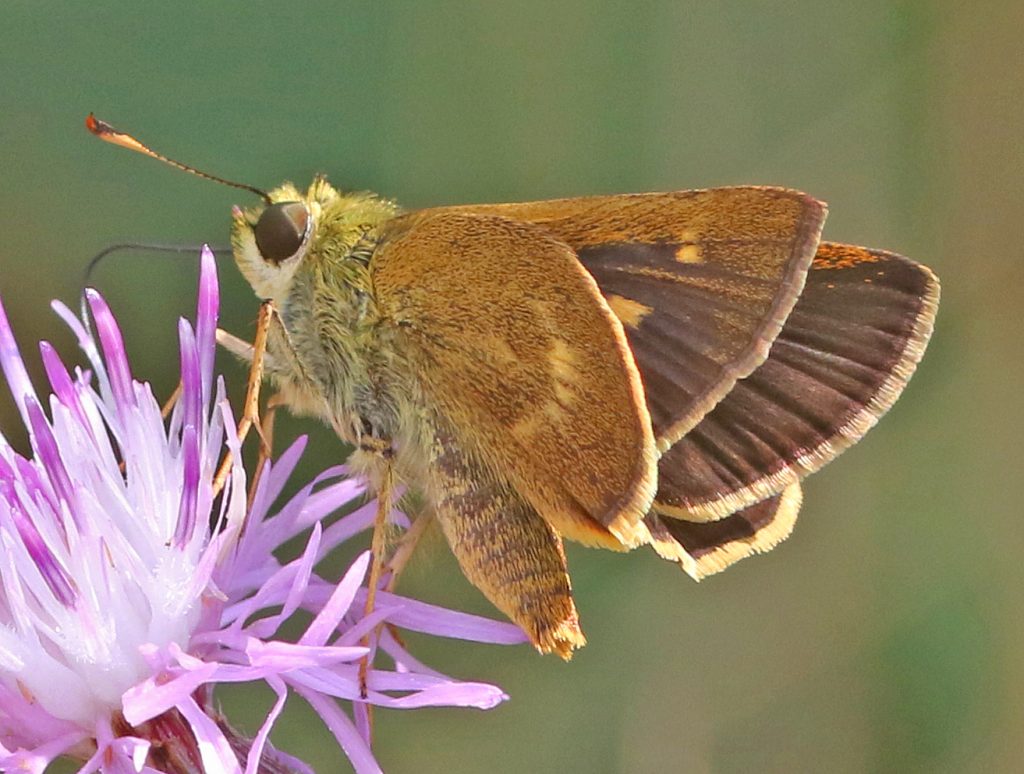
Southern broken-dash? This and another photo by Harvey Tomlinson (see previous post) suggest NJ has been invaded by a species new to the state’s all-time list.
Harvey’s photos of his find at Forsythe NWR on July 26 have generated lots of commentary.
Virtually all veteran observers and other authorities who have emailed me have supported Harvey’s original call, although some underscored that the ID cannot be absolutely certain without a specimen.
As noted in the previous post, David Wright responded to the two photos with “Mighty suspicious of southern broken-dash.”
Michael Gochfeld, co-author of the indispensable Butterflies of New Jersey, replied, “Harvey’s photo is impressive. Has anyone seen an NBD that bright? Or to turn it around: if that photo were taken in Virginia, how would you have identified it? When I was a BAMONA editor, I would probably have listed it as a tentative NJ record.”
Rick Borchelt, website master of the wonderful blog, The Lep Log, which monitors butterfly reports from our southern neighbors from Delaware to Virginia, emailed, “Yes, that is a very typical W. otho. As you see more of these, you’ll see they’re just much brighter orange — especially the antennae — than [northern broken-dash]… We are seeing them [southern b.d] across the region right now.”
Very few of our log participants collect butterflies (and some are adamantly opposed to the practice), so it might be a while before the species can be documented as a new species for the state of New Jersey with a specimen. In the meantime, perhaps the best way for “netless” butterflyers to try confirm its presence in our area is to find more broken-dashes that look suspiciously red. We might find reddish/two-tone-margined broken-dashes in the field over the next month — or by doing a review of photographs from past years.
Harvey’s shots have opened our eyes to the possibility of this hard-to-ID species flying on the NJ Coastal Plain. Could it have already been here hidden by the variety of its closest relative?
At the moment the leading candidate photo of a second southern broken-dash is the one taken by Dolores Amesbury in her garden, Cape May Courthouse on July 27 (see previous post). Dave Amadio emailed, “Harvey’s images really look good for W.otho. Dolores Amesbury’s image is pretty convincing as well.” (I’ve added in the gallery below a different one of Dorothy’s photos of a male broken-dash in her garden, from July 21. Taking a close look is worth the exercise, I think. What would you call it?)
Keep chasing and shooting, everyone!
— Jack Connor
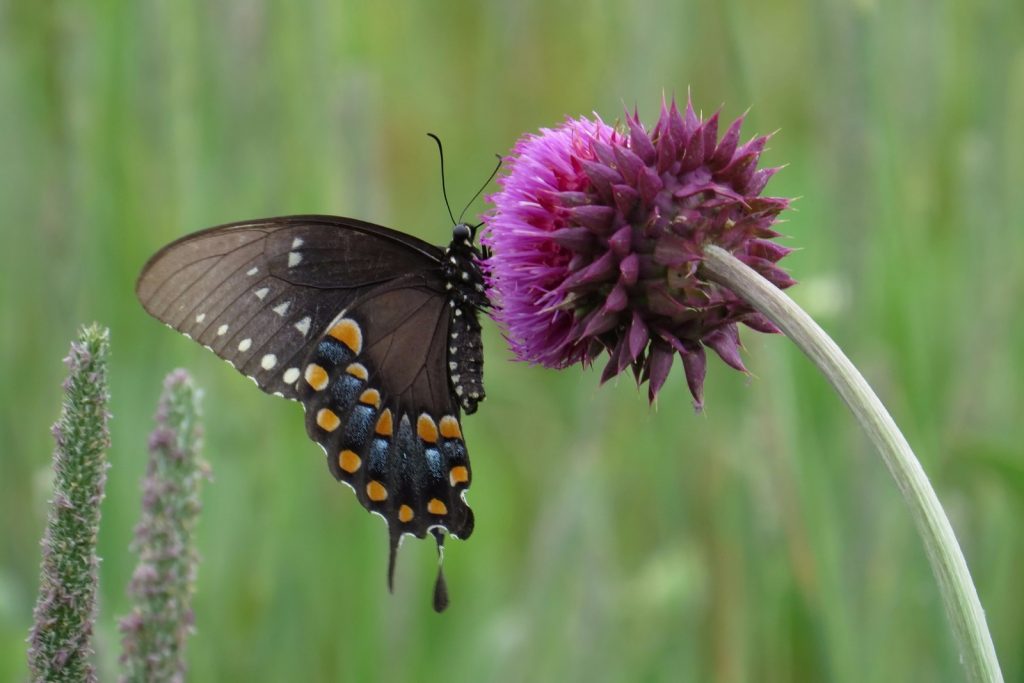
Spicebush swallowtails were widely reported in July. This beauty was photo’d by Jennifer Bulava on July 3 in Lummis Ponds Preserve, CUM.
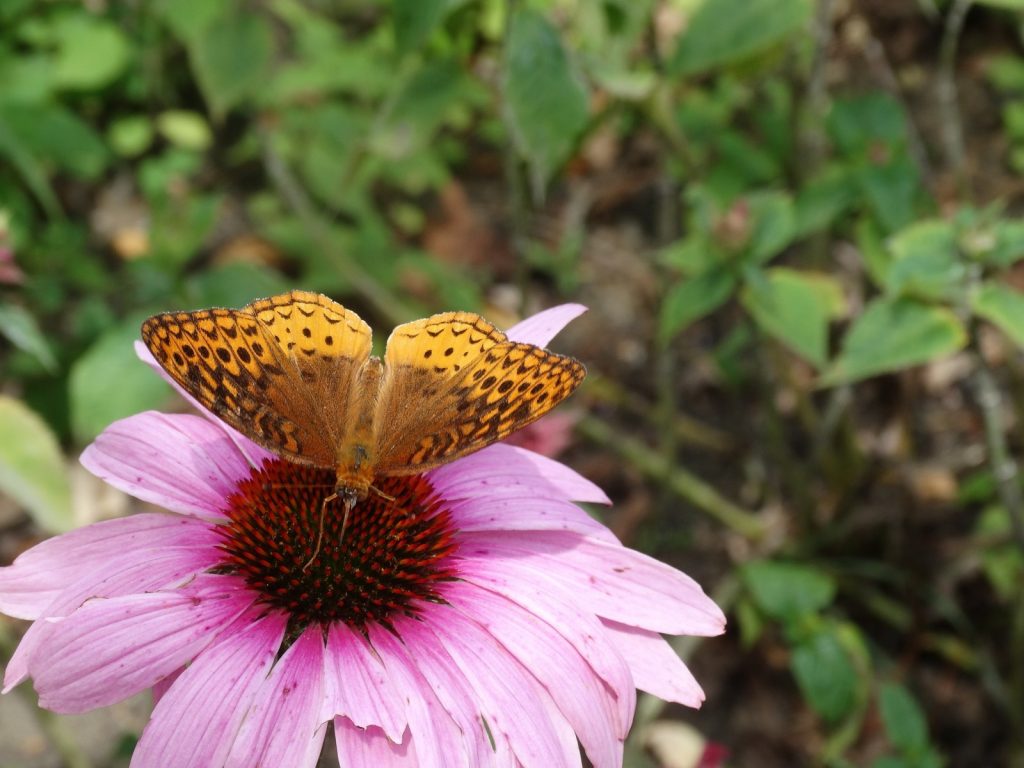
We now have reports of great spangled fritillary in four counties in 2016: Salem, Cumberland, Ocean, and here for Glocuester — photo’d by Chris Herz at Wheelabrator on July 4.
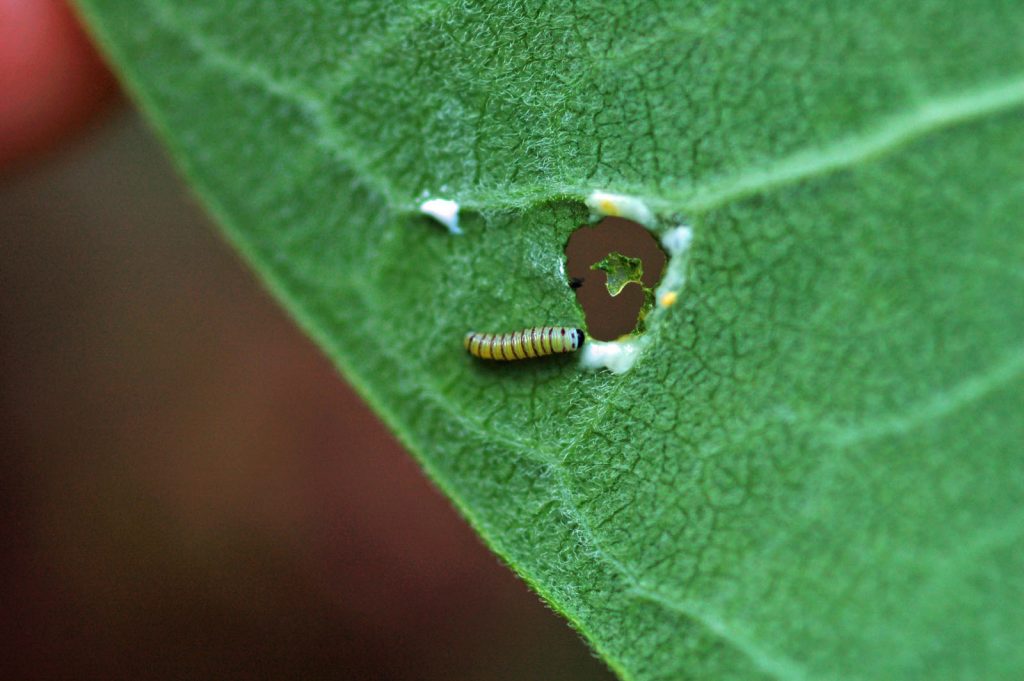
Monarchs moved from scarce earlier in the year to relatively common in July and we collected multiple records of eggs and cats including this early instar photo’d by Pat Sutton in her garden in Goshen on July 8.
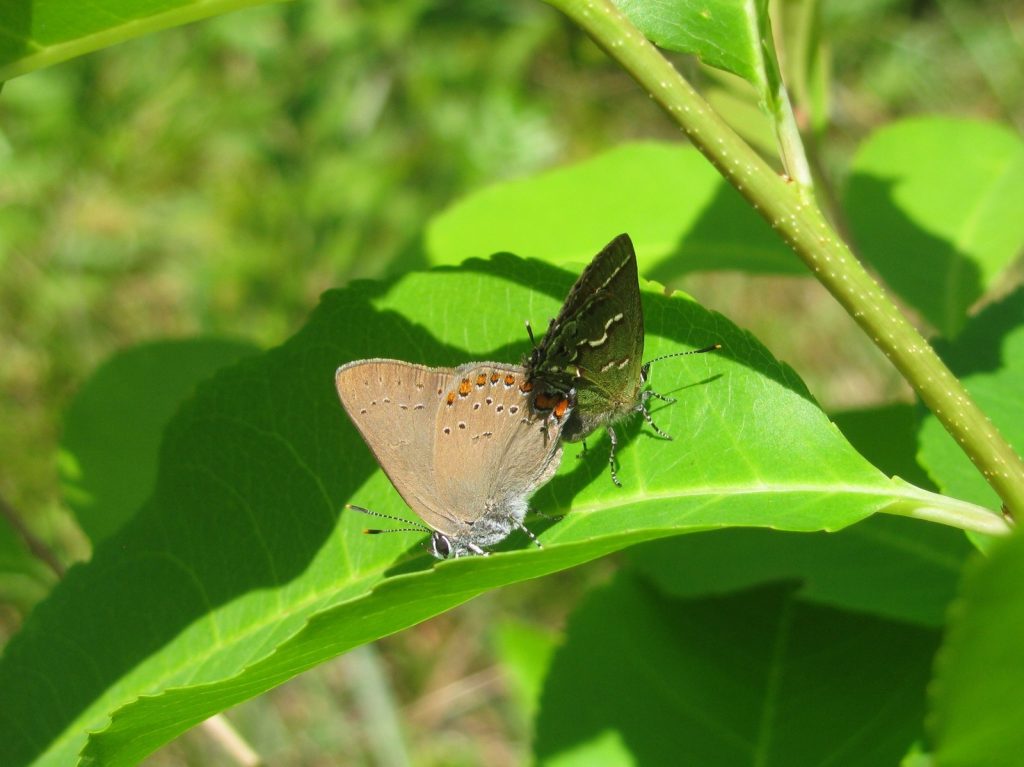
One of the most extraordinary finds of our nine years of logging: coral hairstreak and juniper hairstreak mating — discovered and photo’d by Steve Glynn near Newfield, CUM, on July 11.
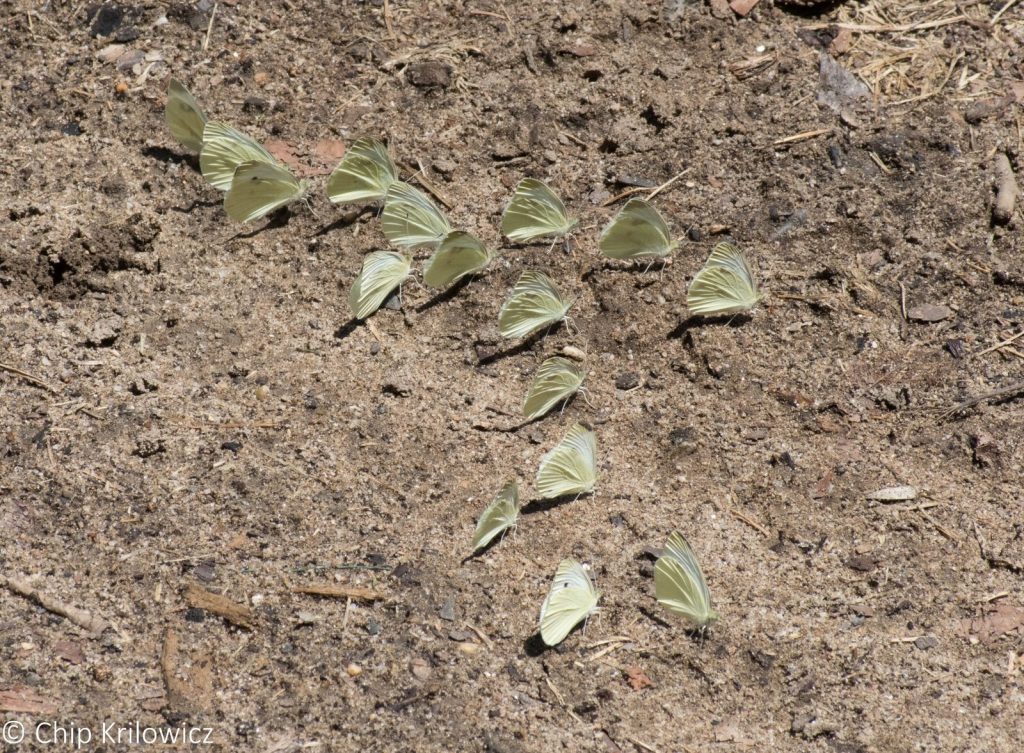
An unusual puddling gathering of cabbage whites found by Chip Krilowicz at Palmyra Cove, BUR, on July 14.
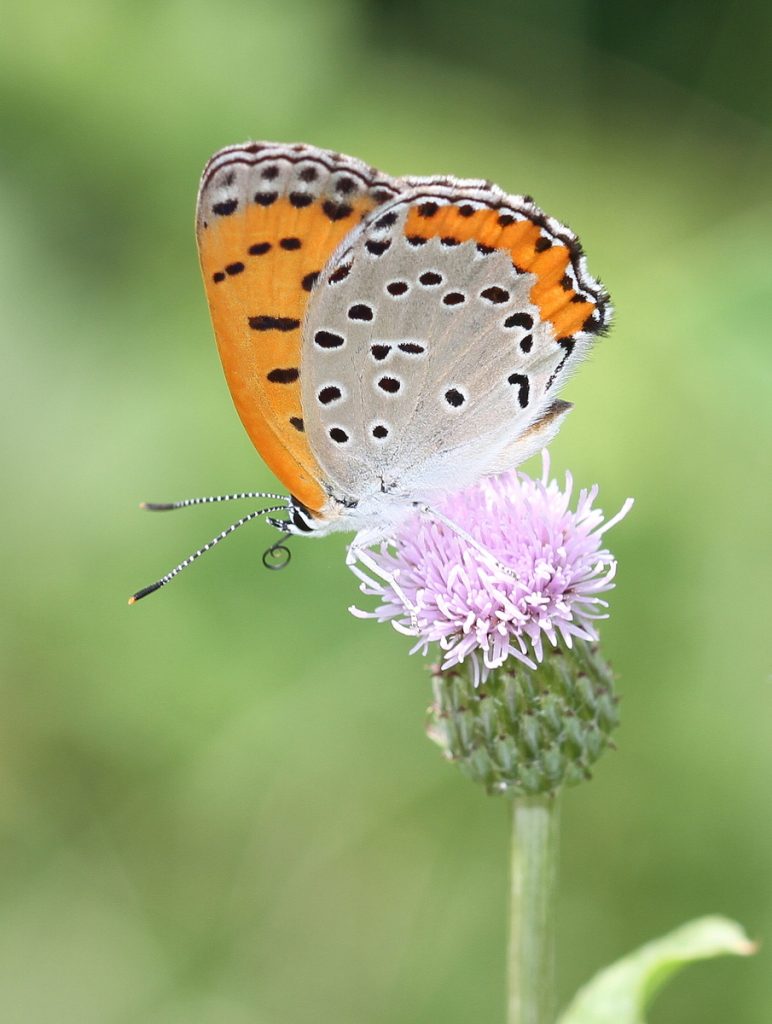
Eight of our ten reports of bronze copper came from Salem County (others from CUM), including this beauty wonderfully photographed by Dave Amadio on July 16.
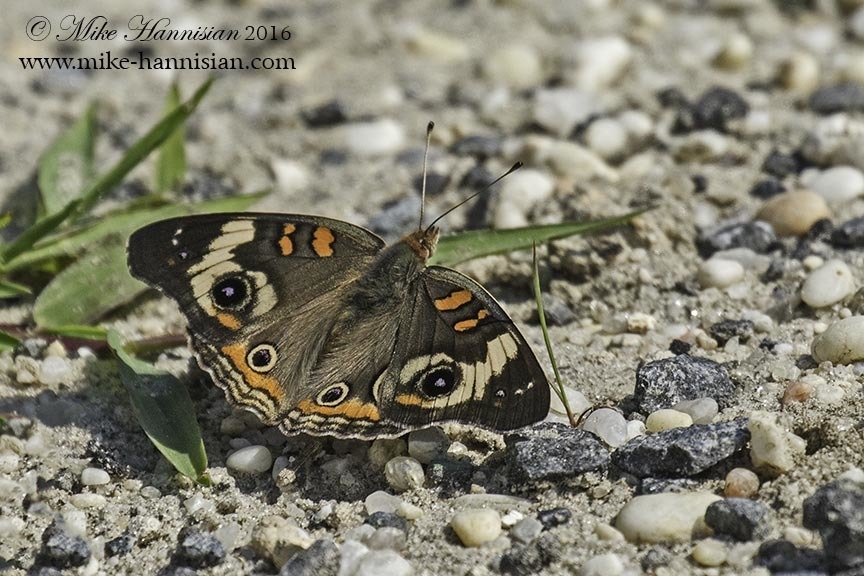
Common buckeyes were reported widely, including this one photo’d by Mike Hannisian in Cape May on July 20. We have no reports of the rosa form so far this year, however.
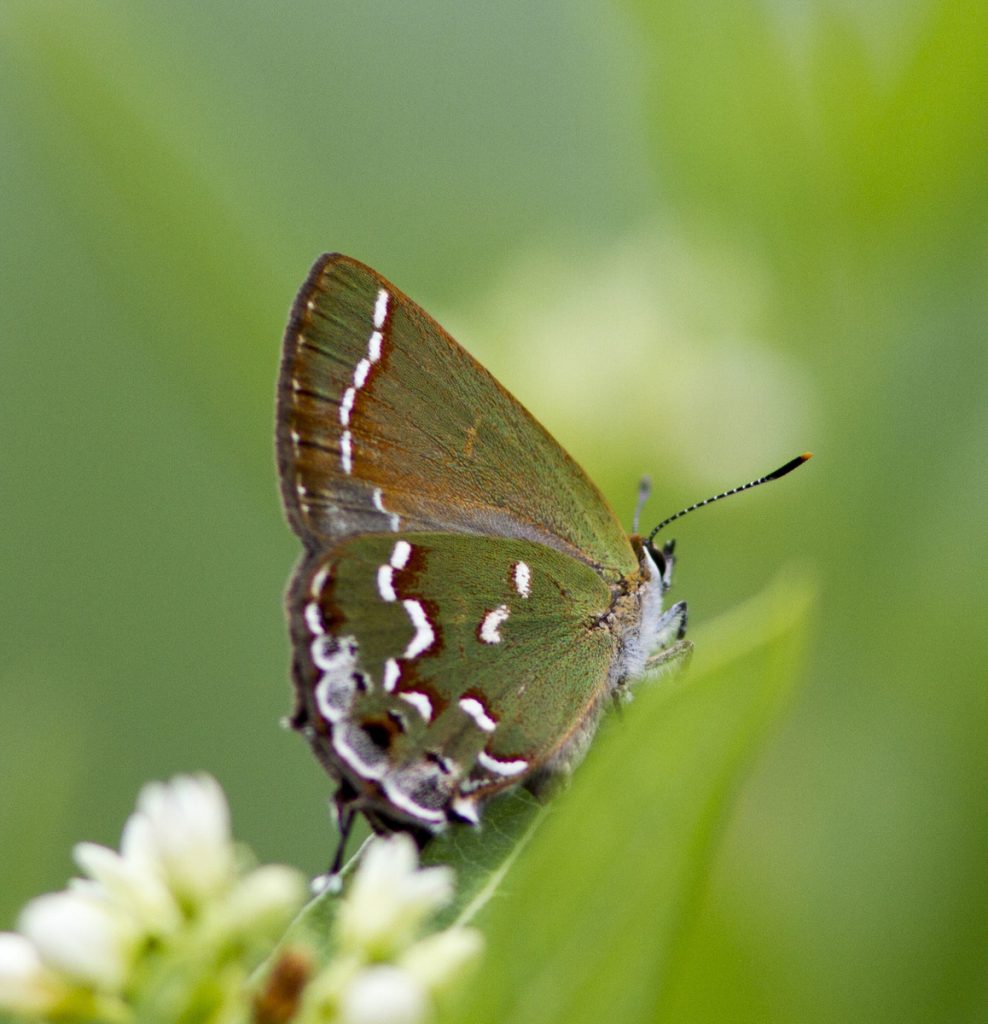
After being so hard to find in their first brood, juniper hairstreaks appeared in multiple sites in July, including this one photo’d by Beth Polvino near the Old Seafood Market on Rt 47 in CMY on July 21.
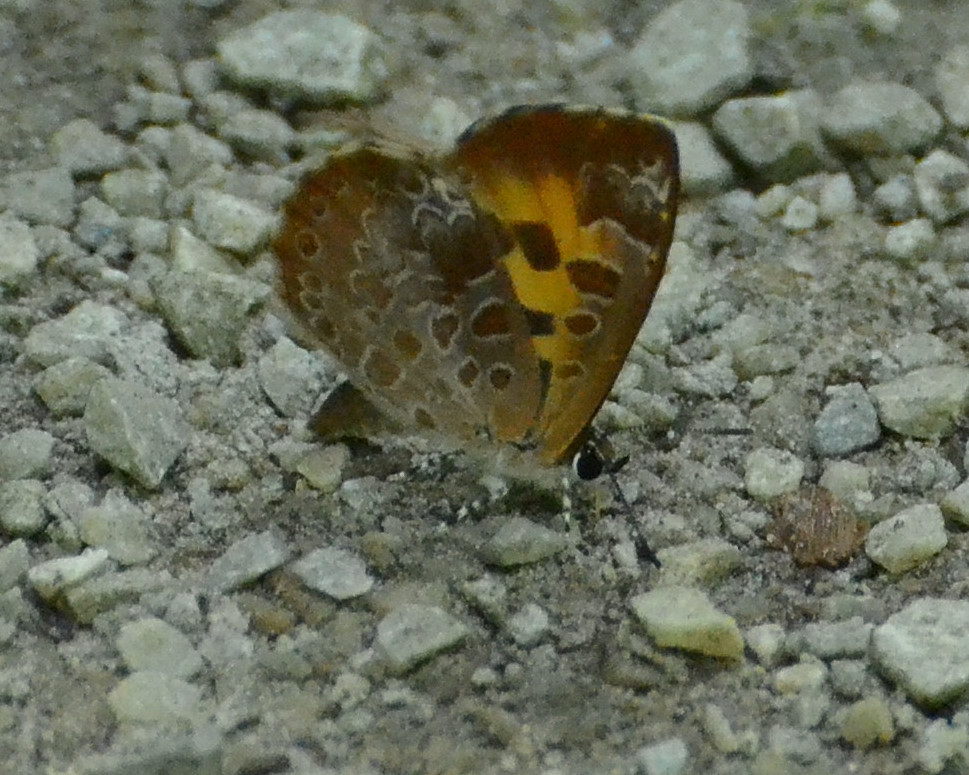
Claire Campbell documented a third site for harvester in Burlington Count in 2016 with this find at Pemberton Rail Trail on July 21.
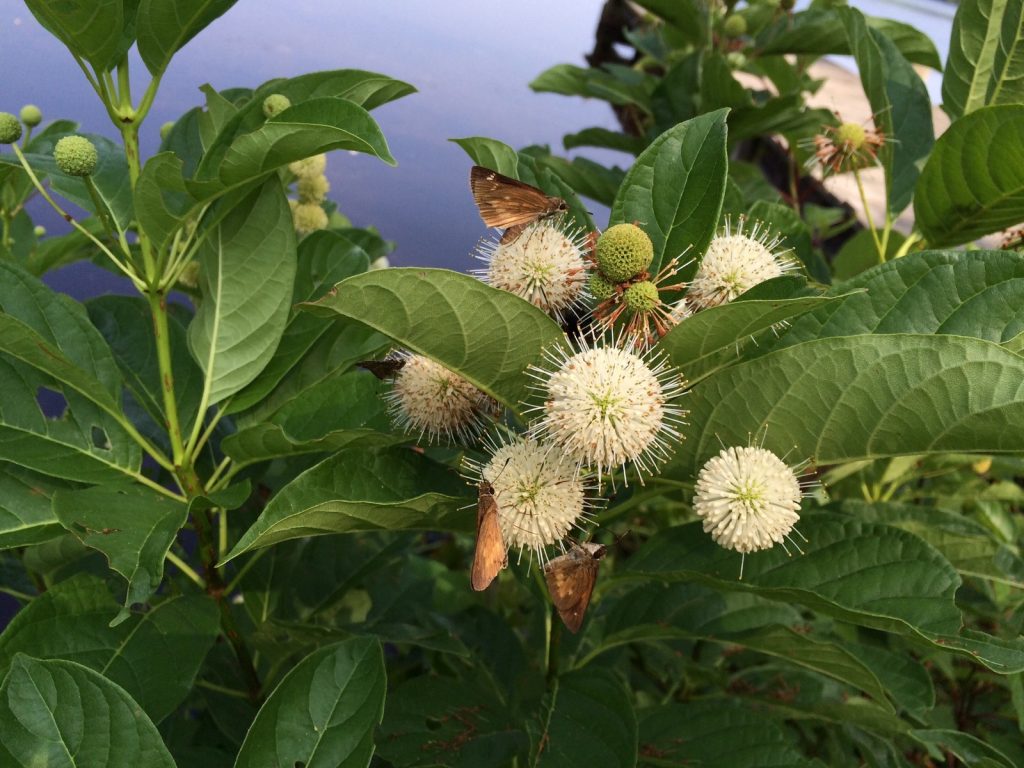
Broad-winged skippers nectaring on buttonbush at Paper Mill Pond, CMY, photo’d by Teresa Knipper on July 25.
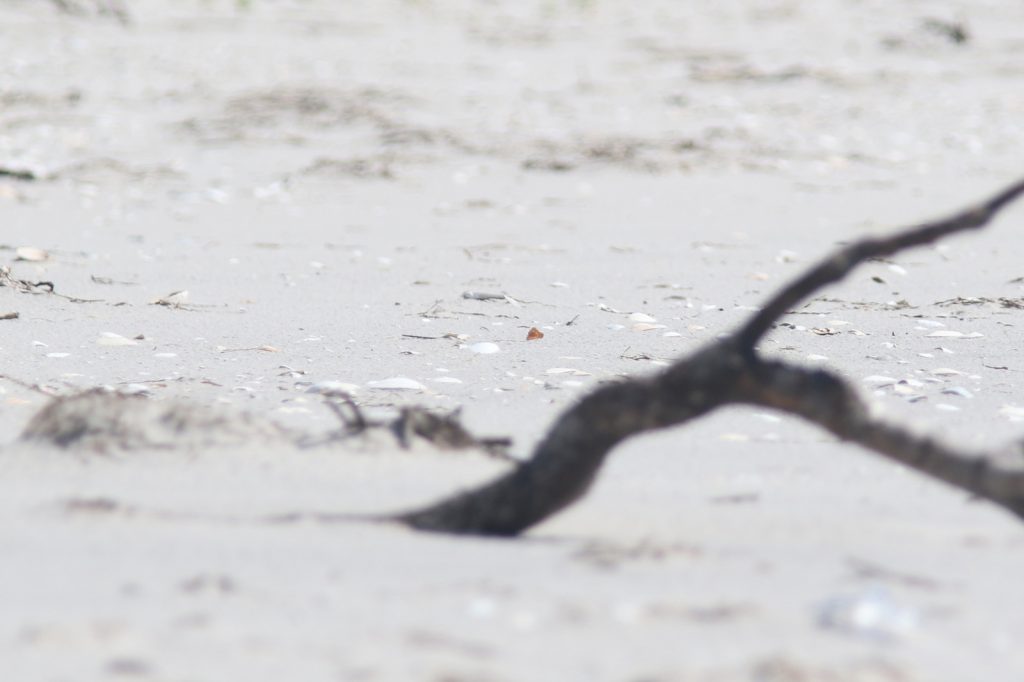
Can you see it? Jesse Amesbury spotted this variegated fritillary way out on the sand at Holgate, OCN, apparently already on migration on July 26.
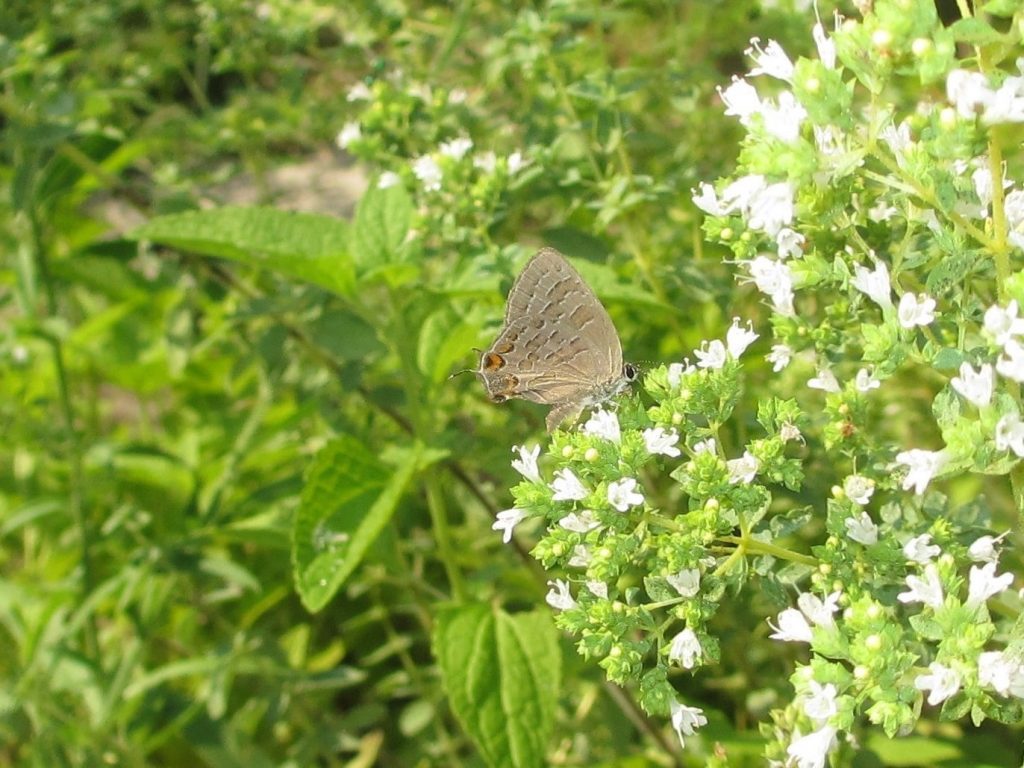
Cynthia Allen found a late striped hairstreak (our final Satyrium for 2016?) in her garden in Cape May Courthouse on July 27.

